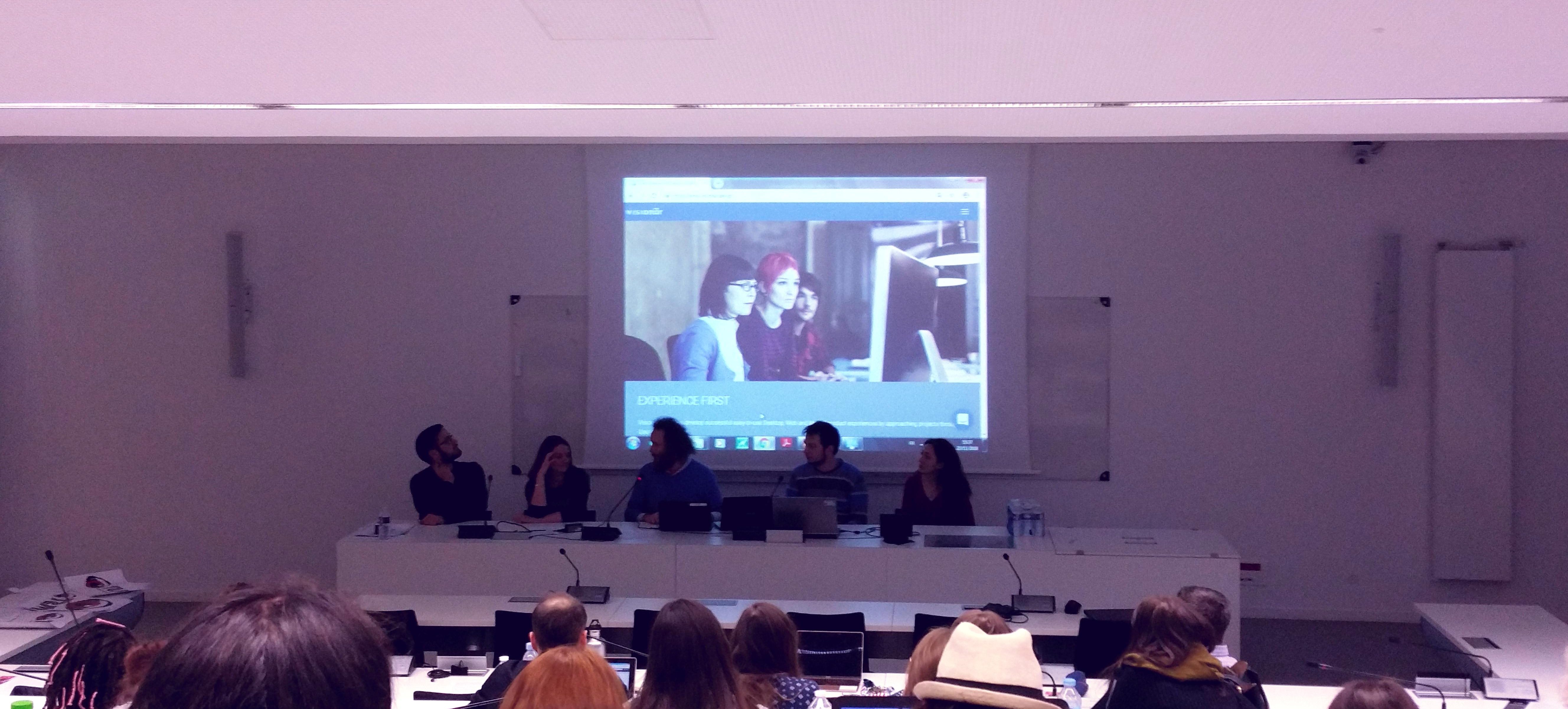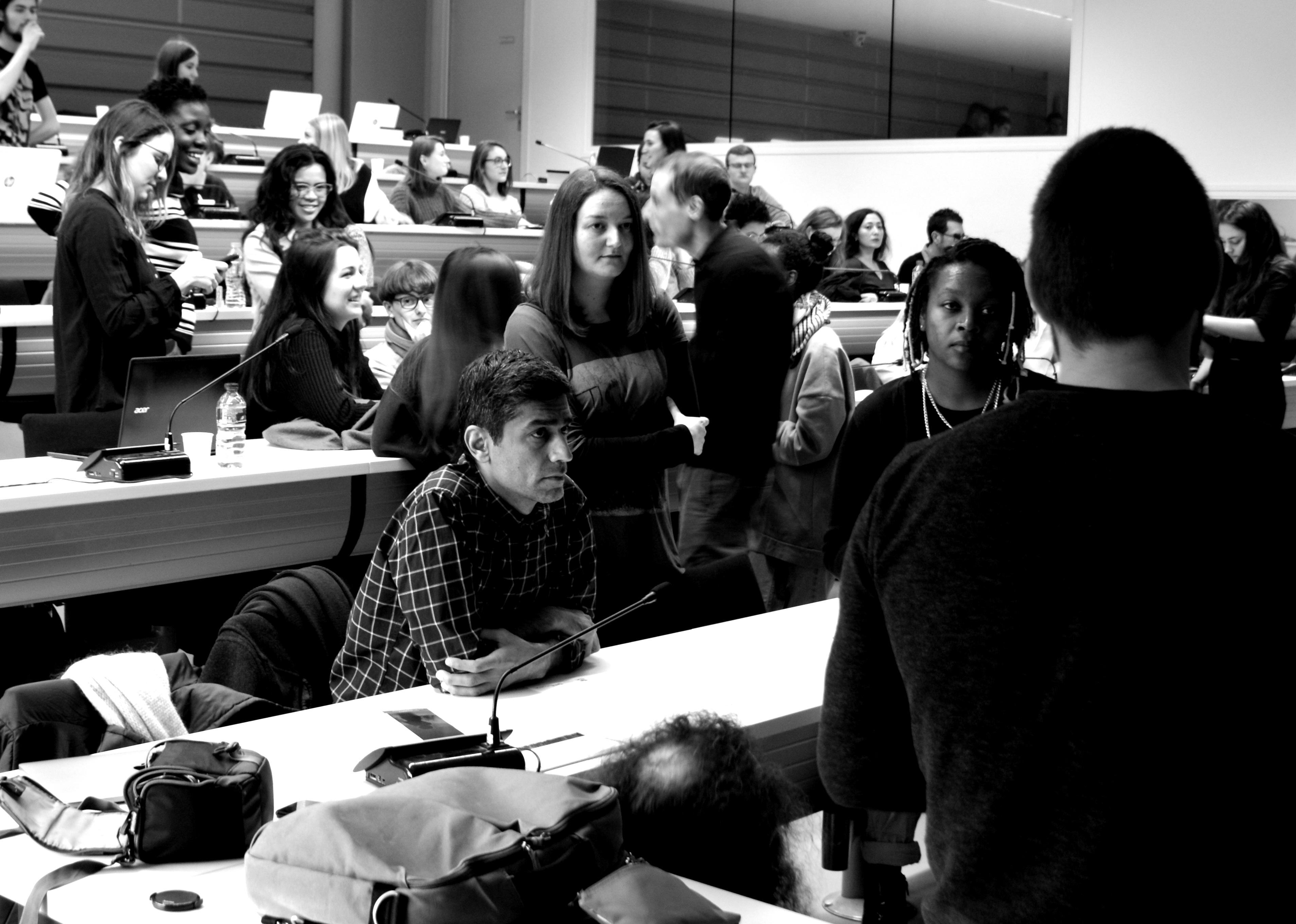Is Lieutenant Uhura on the UX Team? Localisation, Culture and User Experience Roundtable @ University of Bourgogne, France (T2M Conference 2018)
We’ve enjoyed a very positive and growing relationship with the University of Bourgogne, France. In 2016 we began to work with a Masters course intern in their Multimedia Translation course who made exceptional progress and did an outstanding job, really enjoyed her introduction to UX and continued to work with Visionär on a project for Capita Travel. In two days of writing, she’ll be winging her way to participate in a second internship with an Experience team at Apple, Cupertino.
The relationship with the University led to an opportunity for me, Richard, to speak at their localisation conference – culture, and international user interfaces being of particular interest to me. Unfortunately, time didn’t permit me to make the journey in person to Dijon for the conference, and I certainly missed the opportunities of the culinary delights of the region’s legendary rabbit accompanied by mustard. However, the normal wonders of technology made it possible to speak at the conference virtually, and a transcript of the main parts of the conversation are dropped in below.
…
Sincere and ongoing thanks for the invite to Will Noonan, the event’s Maître de conférences and Senior Lecturer.
# Can we begin the roundtable by introducing you and asking for your take as a UX designer/Information Architect on some of the core questions we are trying to address:
Richard: I have been a user experience designer for about 17 years!
I studied Computing with Human Factors (a blend of Computer Science and Psychology) and Communications (cultural history, outsider culture and so on) at what is now London Metropolitan University.
Practice-speaking, I started in a library cataloguing multicultural resources.
My first job was an Information Architect at a business travel firm, HRG, that is now part of American Express.
# From your point of view, what are the core skills required by a UX designer/Information Architect? Where might ‘culture’ (however defined) fit in here? Do you think it is necessary/useful to have a theoretical model of culture to refer to?
The field has expanded to amalgamate many skills – Ergonomics, Usability, Visual design, Conversational Design (Chatbots), User Research, Behavioural Psychology, Copywriting – I know a person who markets herself as a UX writer.
Therefore, the core skills vary depending on what aspect of UX you go into.
You can be a generalist and have a practical understanding of each area or be a specialist, like the UX writer – good in a particular area. She cannot mock up a design, but she can craft engaging content that works with the intended audience.
Commercially, the current state of play is a blend of conceptual skills and visual design. That’s because it makes sense to hire someone who can conceive an experience and then produce the final result.
Above all, though, I think the core human component is empathy. Empathy and inquisitiveness about human relationships and melding a product to its intended audience is the mindset that draws Users in.
# What skills do you think are required to localise, or adapt, a digital product/user experience for a different country/language/region/locale?
- Empathy – an interest in ensuring the product truly talks to its audience.
- Business acumen – an understanding of the balance between time and money, from a commercial pov. You can build a product that’s granularly matched to its audience, but the drivers behind the product (whether the ultimate currency is social or commercial) require an understanding of how deep one needs to go to create a synthesis between the product and its varied audiences.
- Naturally, a skill with target languages, but also perhaps particularly with English. The Internet is still heavily anglicised and will remain so for the foreseeable future. A bit like one is expected to understand English to progress in the world of travel because the computer systems that managed travel – GDS’ were built by Pan American – there’s a need to understand, assuming that the product/service is of Western origin – the originating language first to ensure that translation or localisation is truly dynamic.
- And then, conversely, there is a need for more than just a language understanding, but actually an understanding of the deep and meaningful cultural artefacts of that target language. For example, many Western adverts have to be re-worked to fit other audiences. Likewise, interfaces, and I am thinking about application interfaces might have to be localised. I was working on a project until recently – DHIS2 (District Health Information System) through the Unversity of Norway, across sub-equatorial countries. It was possible to assume that the international guidelines around user interfaces automatically applied to workers in the field, but that is not immediately so. So, assumptions about how many fields should be on a page or their layout, the tone of voice for instructions, the colours employed – as colour has different emotions in different cultures – whether there are aspects that need to be conveyed in the local language and vernacular to achieve effectiveness, were all considerations. And one consideration I was keen to highlight was about Accessibility.
# In terms of your professional practice, do you see a relationship between language, culture and information/UX?
Yes, I have seen practice at a lot of levels from projects like the national pensions scheme NEST that did a whole bundle of research work on the target users and in conducting user testing sessions to better understand how to design products for the like of Dow Jones, Odeon, MoneyFarm, British Standards Institute, Royal Institute for British Affairs. Even in doing those sessions you realise there is a difference in approach to a product based on the test participants cultural background. The interesting thing is that we don’t tend to measure that in UX research.
I’ve also seen it in a website design for Friend’s Provident, part of Aviva. We spent time as part of the project investigating whether sites for particular target markets needed to be in English or a local language. We also looked at what kind of imagery was appropriate for the culture.
# Could you describe your experience/s working with language industry professionals? Do you think that the market supplies the skills and services you need or are new skillsets needed?
My experience, so far, has been positive. Back on business travel products and on a redesign of my own site where the translation was carried out by one of your former colleagues – what I pick up is that there are is an efficiency, and perceived expectation I confess, that the language professional either knows the culture well or will research the culture to ensure their work is robust. I think, particularly as UX broadens to physical products (ergonomics) that it’s very important to be aware of speech technologies. I think, there is also a real need to be mindful of product design and cultural bias – especially in commercial products.
Language industry professionals, I think, who are well acquainted with different cultures will be very well placed to interject in the discourse about how products are designed to meet the needs of diverse audiences even in the same locale. If I remember correctly, Goldsmiths University and possibly the British Computer Society have been involved in this discussion, questioning the equality of AI decision-making and transparency about what goes into the algorithms potentially producing a bias. When you think about UX and robotics and interactive systems, I think language professionals – a bit like Michelle Nicholls (commonly known as Uhura in Star Trek) can have a very impactful part to play.
# How important is ‘native’ cultural competence when developing a digital product/UX? Does this cause problems when adapting the product for different users/a different locale?
I think it’s important. The deeper the cultural affinity and inquisitiveness, the richer the experience transferred into a product. Yes, if a person isn’t culturally competent, they will produce something from their own paradigm that may not be effective with the intended audience. Thinking about the project I mentioned earlier, DHIS2, I wanted to apply international usability standards and accepted heuristics – principles to their software. To some extent, I was quite rightly reminded that the audience in India in rural and urban locations might well not adapt well to the principles I wanted to presume would be understood.



